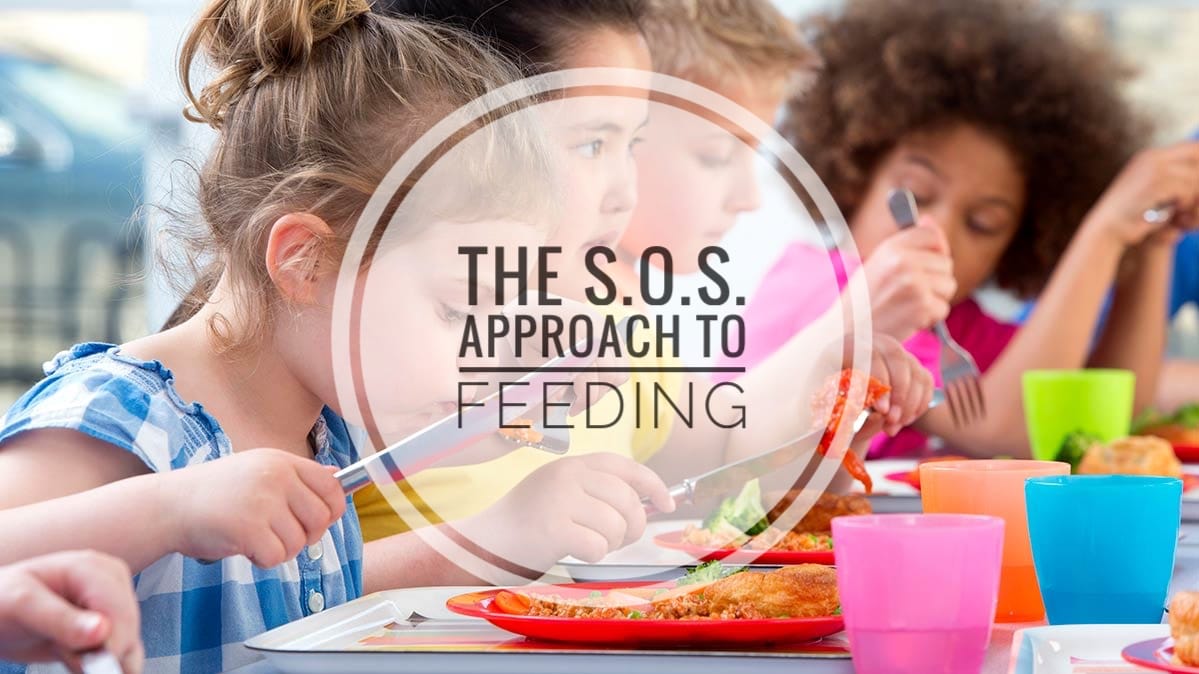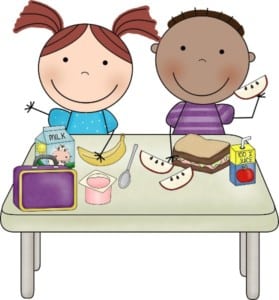This Scribbler blog post was written by Fatima Khodary, Occupational Therapist
Do you have a child who finds food aversive and has a repertoire of 30 foods or less? Do you and your child find mealtimes stressful and think of it as a strenuous task rather than a fun social activity? Well don’t lose hope! The SOS (Sequential Oral Sensory) Approach developed by Toomey & Associates might be just right for you.
I was fortunate enough to have attended the SOS training where I learned everything there is to know (I wish it was that simple) about assessing and treating children with feeding and weight/growth difficulties using the SOS approach to feeding. What I liked about the program is its philosophical idea that the child is always right and that children do what works for them.
I wouldn’t necessarily agree that children are always right, as I am having this mental image of my kids running around the house like monkeys, but as for feeding, I would have to agree. Every time I forced my kids to eat, because my oldest never had a great appetite and my youngest just gave me a hard time with everything, frustration would slowly be building inside me and tears slowly running down for them, and it has never ended in what I hoped would be a nice family mealtime. This has all shifted once I understood the issue with appetite suppression when a child is stressed.
The SOS approach to feeding has been developed over the course of 30 years by Dr. Kay Toomey in conjunction with her colleagues from several disciplines including: paediatricians, occupational therapists, dieticians, and speech and language therapists. I’m always in when it comes to using a transdisciplinary approach because as an occupational therapist, I believe there is no better intervention than having input from different professionals who will see the child from a different lens. This program did just that! It integrates motor, oral, behavioural/learning, medical, sensory, and nutritional factors and approaches in order to comprehensively evaluate and manage children with feeding/growth problems.
Basic Tenants of the Program
- Myths about eating interfere with understanding and treating feeding problems.
- Systematic desensitization is the best first approach to feeding. Let’s keep in mind that there is no single approach that works for everyone.
- The ‘normal development’ of feeding gives us the best blueprint for feeding treatment.
- Food hierarchies/choices play an important role in feeding treatment. Food hierarchies help sensory systems shift slowly into accepting new foods.
Goals of SOS Feeding
The goals of the SOS Program and sessions are:
- To learn to have positive experiences with food
- To learn mealtime routine and cues to eating
- To decrease resistance to touching, tasting and swallowing food
- To increase range of foods child will try
- To increase volume of food ingested (it is the range that drives the volume)
The SOS Feeding Program Structure
For some of you curious individuals, you may be thinking, “Well how does this program actually work?” To start, the child would need to be assessed by a professional. After the evaluation, the child can either go into individual therapy, go into a feeding group, or do only the general treatment strategies. The routine and structure are the same in group or individual therapy.
Sessions usually run weekly over a 12-week period. There is a clear start and end to the structure of the group/individual session as children are part of the conditioning cue complex. The structure is as follows:
- Each session begins with a set routine: sensory motor play for the best alert state, hand washing, description/teaching about the food.
- Therapists next work on the children’s’ oral-motor and perceptual deficits through the choices of the foods made, and the way in which they are presented (tastes, sizes, textures, colours, consistency, temperature).
- The children are advanced up a detailed hierarchy of 32 steps to eating with each new food presented. Therapists interact with the food and children in a way to help children achieve each of the 32 steps from a skill standpoint. In my opinion, this is my favourite part, I get to play and act silly with food!
- Positive social reinforcement is used to support mastery of each step on the 32 steps to eating hierarchy. Social reinforcement is used as it is the most natural type of reinforcement for eating, and allows for the best carry over of the program into the home environment.
If you are interested in getting involved with the SOS approach to feeding with your little one, we recommend you a health professional trained in the SOS approach found here. We are always looking to help families overcome mealtime difficulties at The Children’s Place, and we would love to share information regarding how we can work with you and your little one!
Information provided in this blog article are derived from the Toomey & Associates handouts.





Leave A Comment